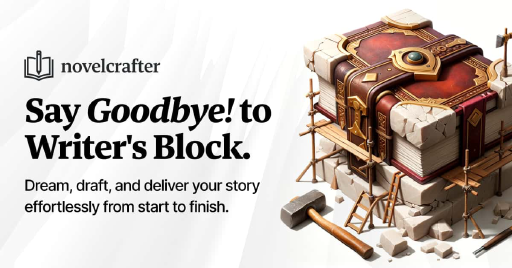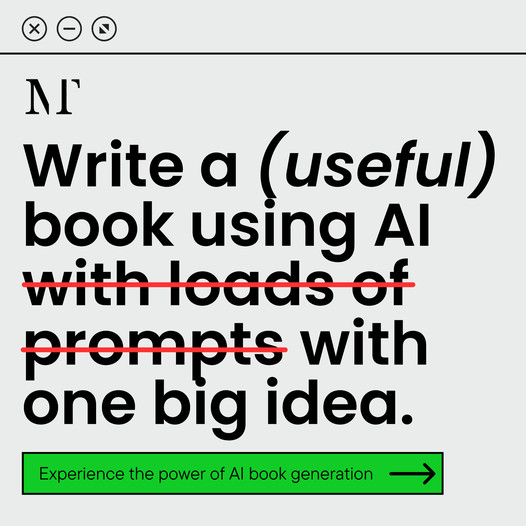The Power of Story Hooks
Introduction to Crafting Compelling Story Hooks
Crafting a killer story hook is a must-have skill for any writer. A great hook grabs your reader’s attention by the collar, pulling them right into your tale. Hooks come in all shapes and sizes, whether it’s a bold question or a jaw-dropping description. If you know how to make story hooks that stand out, you’ll get your readers hooked in no time.
Importance of Engaging Readers from the Start
Those first few sentences? Yeah, they matter—a lot. Readers are quick to judge if your story is worth their time. A hook that hits the mark keeps ’em on their toes and hungry for more about your characters and plot. Check out the table below for why getting readers engaged early on is a big deal.
| What’s the Buzz | Why It Counts |
|---|---|
| Snags Their Attention | A hook that clicks makes ’em curious from the get-go. |
| Sets the Scene | Your intro nails down the vibe and style of your piece. |
| Signals the Themes | A strong hook gives a peek at themes that run through the story. |
| Sparks Emotional Connection | Hooked readers are drawn to your characters and plotlines. |
Want to up your writing game? Check out beginner writing tips or learn how to write better stories. Mastering story hooks can take your writing from “meh” to “wow” and make your work irresistible to readers.
Understanding Story Hooks
Grabbing your reader’s attention is all about nailing that killer opening line or concept—something that compels folks to stick around. A solid story hook is your best friend when it comes to making people curious and eager to dive into your narrative.
What Exactly is a Story Hook?
A story hook is like that irresistible bait that gets folks to take the plunge into your tale. It’s an invitation to wonder more about what follows. If it hits the mark, your audience won’t just be reading—they’ll be invested right off the bat.
Hooks can wear different outfits—maybe it’s a jaw-dropping statement, a vivid snapshot for the mind, or a question that itches at the brain. Whatever the style, the real gig is to snatch the reader’s focus and get them glued to the unfolding story.
Elements of an Effective Story Hook
Getting that story hook to stick involves a cocktail of elements that work hand-in-hand to snatch the reader’s attention. Here are some of the big hitters:
| Element | Description |
|---|---|
| Curiosity | Stirs up questions, making the reader hunt for answers. |
| Emotion | Connects on a personal level with feelings and past experiences. |
| Conflict | Drops a problem or tension that begs to be resolved. |
| Imagery | Paints a vivid picture that reels in the imagination. |
| Voice | Flaunts the writer’s unique style, giving the hook its signature flair. |
Weaving these into your hooks turns them into magnets for attention. If you’re after some extra tips on telling stories that wow, check out our piece on how to write better stories. Dig into these elements as you get the hang of how to write killer story hooks.
Techniques for Crafting Compelling Hooks
Ready to grab your readers by the eyeballs from the get-go? Crafting a killer hook is key. Let’s explore some snazzy strategies to reel ’em in and keep ’em hooked like a soap opera about to drop a bomb. Here’s three top-notch techniques:
Start with Action or Conflict
Jump right into the thick of things. Kick off your story with a burst of action or a juicy conflict. This shoves readers straight into the heart of it all, making them wonder how on earth stuff got so crazy and what wild twists are coming next.
 What Poetry Feels Like
What Poetry Feels Like| Example Scenario | Hook |
|---|---|
| A character running away | “She bolted down the alley, heart pounding, as the monster’s steps echoed, too close for comfort.” |
| A confrontation | “The room was electric, their eyes locked, daring the other to make the first reckless move.” |
By starting with high stakes and tension, you’re setting the scene for a ride your readers won’t want to jump out of anytime soon.
Create Intriguing Questions
Kickstart your tale with a question that scratches an itch in your reader’s mind. This tactic gets their gears turning, filling them with a desperate need to discover the answers hidden in your words.
| Example Scenario | Hook |
|---|---|
| A character finding a mysterious object | “Imagine stumbling upon an ancient key. What mysteries might it unlock?” |
| A character receiving an unexpected message | “Why did the letter bear the name of someone who’s been resting in peace for a decade?” |
Questions like these add a sprinkle of mystery, pushing readers headfirst into your world, eager to unravel every secret you’ve planted.
Develop Vivid Imagery
Paint them a picture with your words. Opening lines dripping in vivid imagery transport readers into your universe and stir up feelings. Good descriptions don’t just describe, they make the senses sing.
| Example Scenario | Hook |
|---|---|
| A description of a vibrant setting | “The sun melted into the horizon, splashing orange and pink across the sky, while jasmine’s sweet scent danced on the breeze.” |
| A character’s emotional state | “Her hands quivered as she faced the mirror, staring into eyes that held a storm of unsaid fears.” |
Giving life to scenes through rich imagery lets readers step inside your characters’ shoes, seeing, hearing, and feeling every little detail.
Use these spine-tingling techniques to pull readers into your story and keep them hanging on to every word. For more gems on writing magic, take a peek at our article on beginner writing tips and delve into how to write better stories for even more know-how.
Types of Story Hooks
Picking the right kind of story hook can spice up your tale and reel readers in like a fish on a line. Here’s a quick rundown of three hooks you can use in your writing: shock starters, character rollouts, and scene setters.
Shocking Openers
Kicking things off with a jaw-dropper can make readers sit up and pay attention. A wild fact, a plot twist, or something downright unexpected can pique curiosity, making folks eager to keep going just to see what’s what.
Check these shocking openers out:
| Hook Type | Example |
|---|---|
| Statement | “It was the day she picked songs for her funeral.” |
| Question | “What if you woke up and nobody knew who you were?” |
| Action | “As she reached for the door, KA-BOOM went the world.” |
A bold statement or question? It’s like setting off fireworks in the brain, urging a reader to dig in and find out more.
Character Introductions
Launching a character into the spotlight with flair can be just as effective. Throw them into unusual scenarios or paint their emotional state, and readers might just find themselves rooting for your characters from the get-go.
Try these on for size:
| Intro Type | Example |
|---|---|
| Unique Situation | “With her last few bucks slipping away, Clara realized this was it.” |
| Emotional State | “With grief wrapping ’round him like a heavy coat, Jason entered where laughter once lived.” |
| Quirk or Trait | “Mismatched socks were Elena’s tiny middle finger to her mom’s rules.” |
By showing urgency and relatable emotions, these hooks pull readers into the characters’ world.
Setting Descriptions
Painting the world of your story in vibrant colors can awaken readers’ senses from the jump. A well-thought-out scene can stir emotions and dunk readers into whatever universe you’re creating.
Check out these sensory-rich examples:
| Sensory Detail | Example |
|---|---|
| Sight | “Neon lights tangled with dark alleys made the city a maze.” |
| Sound | “Echoes of laughter threaded through the narrow streets.” |
| Smell | “Fresh-baked bread’s aroma wafted through the air, beckoning.” |
These descriptions don’t just capture attention; they set the stage, vibe, and feel of your story, making the reading experience richer.
Use these hooks to grab your readers from the word go. For more tips and tricks on storytelling, check out our articles on how to write better stories and beginner writing tips.
Refining Your Story Hooks
Nailing that killer story hook is just step one, my friend. To make sure it hits the right note with your audience, you gotta tweak and perfect it using some good old testing and feedback.
Testing Different Hooks
Messing around and finding what clicks is key to crafting the best hook for your story. Whip up different versions and see which one really pulls folks in. Here’s a cheat sheet of ideas to play with:
| Hook Type | What’s It About? | How Do Folks React? |
|---|---|---|
| Surprise Opener | Starts off with a jaw-dropper | People are all ears |
| Question Start | Kicks off with a thought-provoker | Curiosity piqued, but just a bit |
| Character Drama | Spills some conflict tea | Hearts go out, tissues are grabbed |
| Setting Sketch | Paints a picture with words | Eyes wide, visualizing like mad |
Check out how readers vibe with your hooks to tweak your style. Wanna up your game? Peek at famous hooks in books or movies to see what tickles folks’ fancy.
Seeking Feedback from Peers
A little friendly critique is like gold when you’re shaping your writing chops. Share your hooks with writer buds, join groups, or tap friends for their take. Throw some questions their way about what they’re getting from your hooks:
- Does it catch their eye right away?
- Are they left wondering or feeling something?
- Is it clear and gets them wanting more?
Swapping thoughts gives you a sneak peek into how you can adjust your hook to hit the mark. Plus, chatting with others can help you build a rad community of fellow scribblers. If you’re itching to step up your game, think about diving into some writing drills or finding a local writers’ hangout.
It might take a bit to finesse those story hooks, but trust me, it’s worth it. When you snag readers from the get-go, they’re more likely to stick around for the tale.
Tips for Mastering Story Hooks
Getting those first few lines right can make or break your tale. Here’s how you can turn readers into lifelong fans with just your intros.
Study Successful Hooks
Diving into hooks crafted by seasoned authors is like finding gold nuggets in a river – they offer rich insights. Peek at the openers of your favorite reads – novels, short stories, or even articles. Notice the tricks authors use to snag your attention – maybe it’s a bit of conflict, a taste of mystery, or a hint of relationships. You might want to jot down these hooks and judge them on how they stir up emotions, create tension, or feed curiosity.
| Element | Hook Example | Emotional Impact | Curiosity Level |
|---|---|---|---|
| Action | “The gunshot rang out in the quiet night.” | High | High |
| Question | “What would you do if you woke up in a stranger’s house?” | Medium | High |
| Description | “The old house loomed, its windows like dark eyes watching.” | Medium | Medium |
By soaking up these techniques, you’ll get a knack for crafting attention-grabbing story hooks.
Practice Writing Hooks Regularly
The more you flex your hook-writing muscle, the stronger it gets. Set some time daily to try out different hooks. Maybe spin some fresh openings for your tales or tweak ideas you’ve got cooking. Pencil in regular creative writing drills to keep those ideas flowing. Mix it up with actions, questions, and colorful descriptions to expand your skills.
Keep a record of your attempts, circle back now and then to tweak them. Pretty soon, you’ll hit on a style that’s tailor-made for your readers.
Stay True to Your Writing Voice
Let’s talk about authenticity – it’s what readers latch onto. Your hooks should sound like you, like nobody else. Sure, pick up tricks from the masters, but keep your unique flair ever-present. Check out how your voice influences your hooks and the bigger picture of your narrative.
Play around with different hooks but keep your signature voice at the heart of it all. Not sure about your style yet? Explore some tips on discovering your writing vibe. Lean into what makes you, you – your hooks will end up being a true taste of your storytelling soul.


 Grab my poetry book, 'we're all just wanderers in the end' Here
Grab my poetry book, 'we're all just wanderers in the end' Here AD: Your Book Finally Written...
AD: Your Book Finally Written...